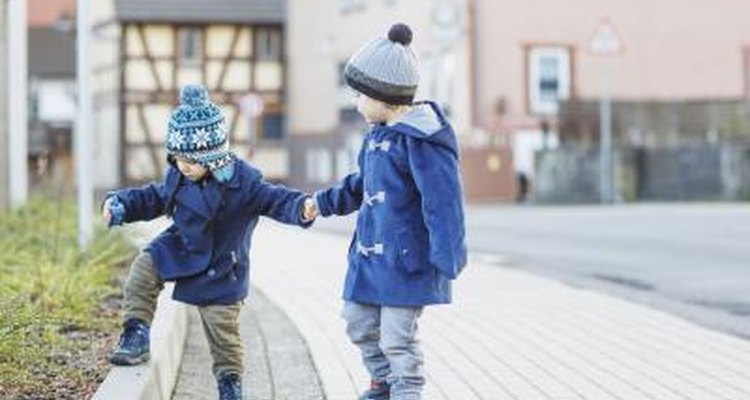
Emphasis is often placed on teaching children honesty, integrity and accountability, but humility is also a desirable personal quality that children can learn. Humility involves one's view of self. It could even be said that humility is about being honest with one's self. The humble child does not think less of his abilities than is warranted, but rather he has a realistic view of his abilities and has gratitude, instead of a sense of superiority, says Christopher Peterson in "A 'So What' of Humility," written for Psychology Today. You can foster humility in your child with games and activities. (See Reference 6.)
Team Sports
Team sports teach humility as children learn to work together for a common goal. Encourage each player to be aware of their own skills, as well as the skills of the other players. Through your guidance, children can learn that the success of the individual is not as important as the success of the team, according to "5 Real World Skills that Sports Teach Us" on the Briarcliffe College website.
Cooperative Games
The essence of humility is the willingness to help others. Games that involve working cooperatively can foster this trait in your child. The "humming game," involves choosing one person who is "it," and a task for that person to perform, such as standing in front of the white board. The person who is "it" goes out of the room while the group chooses the task and decides on a song to hum. The "it" person returns to the room and stands in the middle of the floor. The group hums softly. The "it" person begins to walk around the room. As "it" gets closer to the task, the group hums louder. When the task is achieved, the group cheers for the child who was "it." (See Reference 2, Page 7.)
Toss the Bird
Toss the Bird is an outdoor game that teaches children to look out for each other. Using small, stuffed toys, squishy balls or knotted wash cloths for "birds," have fewer birds than you have children. Select one person to be "it." The child who is "it" tries to tag a child who does not have a bird. If the "it" child succeeds, the tagged child is then "it." However, the children who have "birds" try to "save" the children who do not have birds by tossing the empty-handed child a bird as "it" approaches. The child who receives a tossed "bird" must say "thank you" to the sender. By helping each other and expressing gratitude for help, children learn humility. (See Reference 5.)
Donkey Paper Bag Craft
Donkeys are animals similar to horses and ponies. They are used to carry and pull loads to help people. To teach humility using the donkey as an object lesson, show your child how to make a paper bag donkey. As you make the donkey, talk about how donkeys help people. Print out a donkey face shape, separate ears, arms and a tail. Older preschoolers can help cut these shapes out. On the folded side of the paper bag, glue on face and ears, arms on the sides of the bag and the tail on one side below the arms. Color the body parts. See Resources if you need a donkey template.
Related Articles

Ministry Reformation Day Party Ideas

Children's Activities for Psalms 23

Carnival Game Names

Thanksgiving Christian Games

Pokemon Party Games

How to Grill a Cornish Hen on the ...

St. Patrick's Day Religious Activities

Outdoor Dinosaur Party Games

Outdoor Christian Games for Children

Mardi Gras Party Games for Kids

Second Grade Holiday Party Games

Family Devotional Games

Fun Games for Sunday School Kids Ages ...

Bible Games on Psalms for Kids

Holy Spirit Games for Kids

Kid's Games for Hallelujah Night

How to Make a Caterpillar Costume

Valentine's Day Party Games for School- ...

Memory Games for Senior Citizens

Fruit of the Spirit Activities for ...
References
- PeaceFirst.org: Top 10 Cooperative Games for Families
- Kids Sunday School: Grade School Activities: The Humble and the Proud
- DLTK’S Kids Growing Together: Donkey Paper Bag Craft for Kids
- Psychology Today: A "So What" of Humility; Christopher Peterson
- Briarcliffe College: 5 Real World Skills that Sports Teach Us
Resources
Writer Bio
Laurie Lanehart started writing in the early 1980s with a teen column for a paper in the Minneapolis area. She holds a degree in culinary arts and currently resides in the Dallas/Fort Worth area where she is a member of the Garland Writers Guild.
Photo Credits
romrodinka/iStock/Getty Images